Our world is filled with constant noise, which can negatively impact the physical and mental well-being of all living creatures. For birds, noise is a chronic and unavoidable source of stress. While they have endured loud natural sounds like streams, waterfalls, and wind for centuries, human-made noise pollution is a relatively new and concerning phenomenon. Extensive research has established the significant effects that this noise has on birds, including physical harm, behavioral changes, and disruptions to the reproductive cycle.
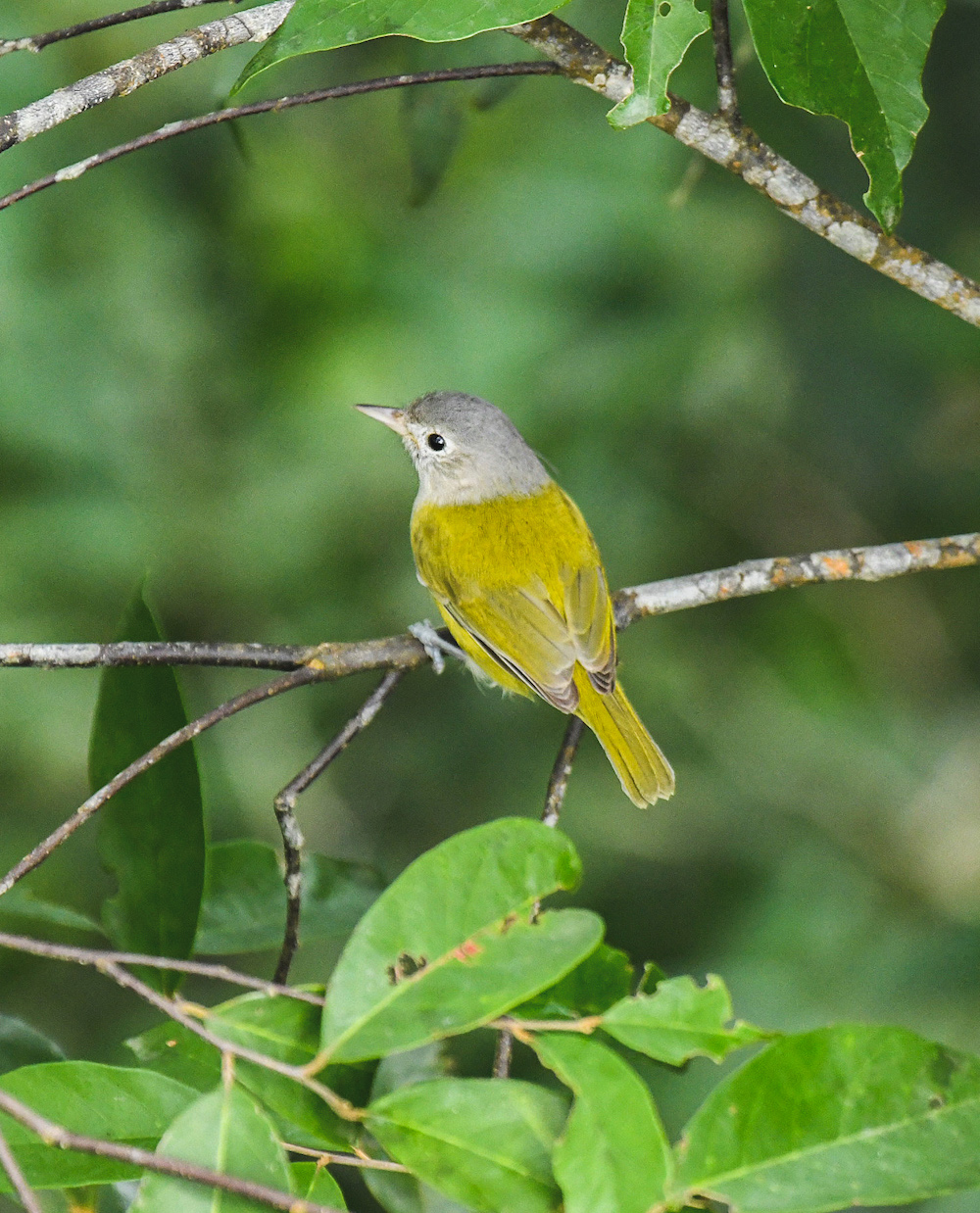
Pachysylvia decurtata. Lesser Greenlet. Santa María, Tapon Creek, Izabal. BL, 2020. FLAAR Mesoamerica.
The difference between noise and sound
The origin of the term “noise” can be traced back to the Latin word “nausea,” and it refers to any sound that is unwanted or disruptive to other sounds. “Sound” is defined as a set of vibrations that create an auditory sensation when they move through the environment. The perception of sound and noise is subjective, varying between individuals and species. While natural sounds may at times disrupt our ability to hear or interpret other sounds, noise pollution typically refers to unwanted sounds that result from human activities.
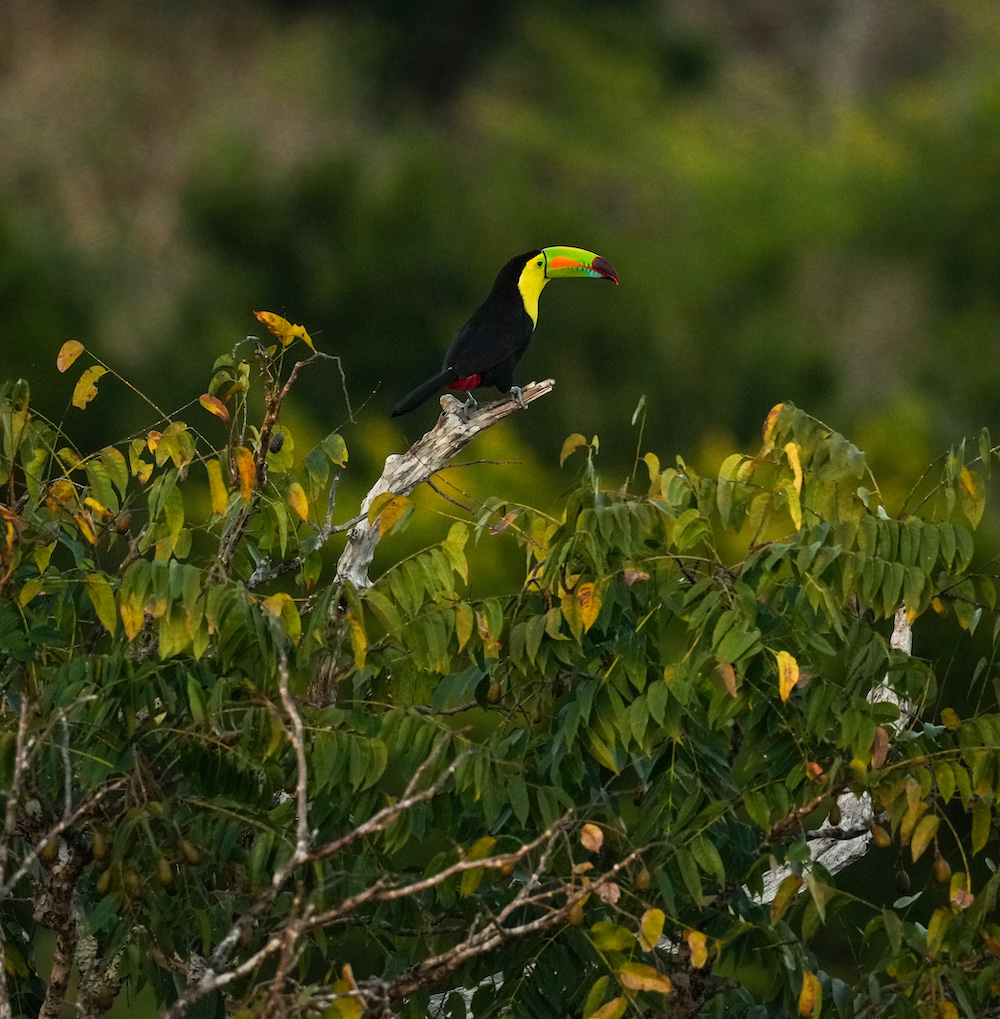
Ramphastos sulfuratus. Keel-billed toucan. Tikal, Petén. Edwin Solares, 2023.
Anthropogenic noise affecting birds
The presence of human-generated noise, also known as anthropogenic noise, is closely tied to our daily activities. As human population density increases, so too does the amount of noise we produce. This is particularly evident in urban areas, where modern technologies, vehicles, and conveniences contribute to a constant hum of activity. However, even natural areas are experiencing an uptick in noise pollution. Unfortunately, there is no place on our planet that is entirely free of the effects of noise pollution, as even the most remote locations are impacted by the sounds of airplanes and land vehicles.
Anthropogenic noise disrupts the acoustic communication of wildlife and has a significant impact on the quality of bird habitat. This phenomenon, commonly known as noise pollution, affects birds in numerous ways, such as physical harm, stress responses, changes in feeding and reproduction, interference with the ability to hear other important sounds, and potential changes in populations. The effects of noise pollution vary depending on the type of noise, including frequency, volume, consistency, and duration. Below, we outline some of the ways in which birds are affected by this form of pollution.
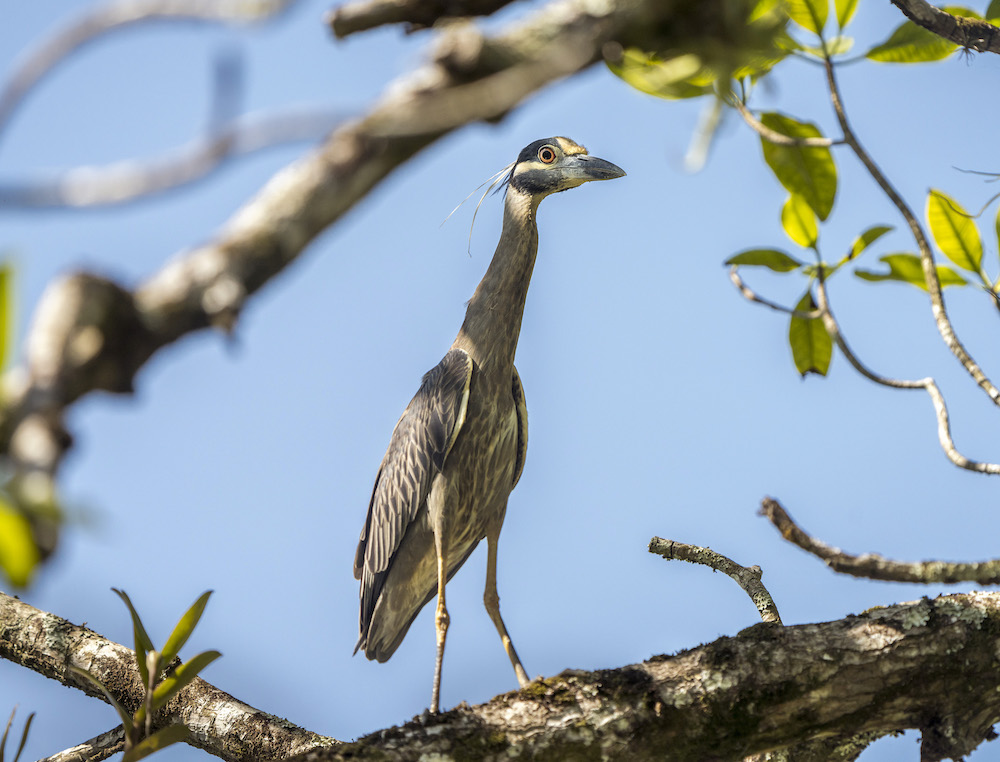
Nyctanassa violacea. Yellow-crowned Night-Heron. Río Bonito, El Golfete, Livingston. David Arrivillaga, 2021. FLAAR Mesoamerica.
Physical damage
Prolonged exposure to loud sounds can be detrimental to animals, particularly to their sensory hair cells. Mammals commonly experience permanent hearing loss, while birds may regenerate these hairs to some extent, resulting in temporary damage and varying recovery times depending on the species. However, chronic exposure to loud noises can lead to long-term physical effects on birds, such as cardiovascular diseases, feather loss, weight loss, among others.
 Buteo nitidus. Gray-lined Hawk. Rio Lampara, Río Dulce, Livingston, Izabal. Haniel Lopez, 2021. FLAAR Mesoamerica.
Buteo nitidus. Gray-lined Hawk. Rio Lampara, Río Dulce, Livingston, Izabal. Haniel Lopez, 2021. FLAAR Mesoamerica.
Changes in foraging responses
Research has shown that noise pollution can impact the behavior of birds. Specifically, studies indicate that excessive noise can negatively affect foraging behaviors. Some birds may prolong their state of awareness instead of focusing on finding food. As a result, noise pollution can directly interfere with feeding behavior. While some birds tend to avoid noisy areas and seek out quieter environments, others are surprisingly tolerant and may even prefer human-inhabited areas, including those with high levels of noise. For instance, the Great-tailed Grackle is often found in urban areas due to the abundance of food available in these environments.
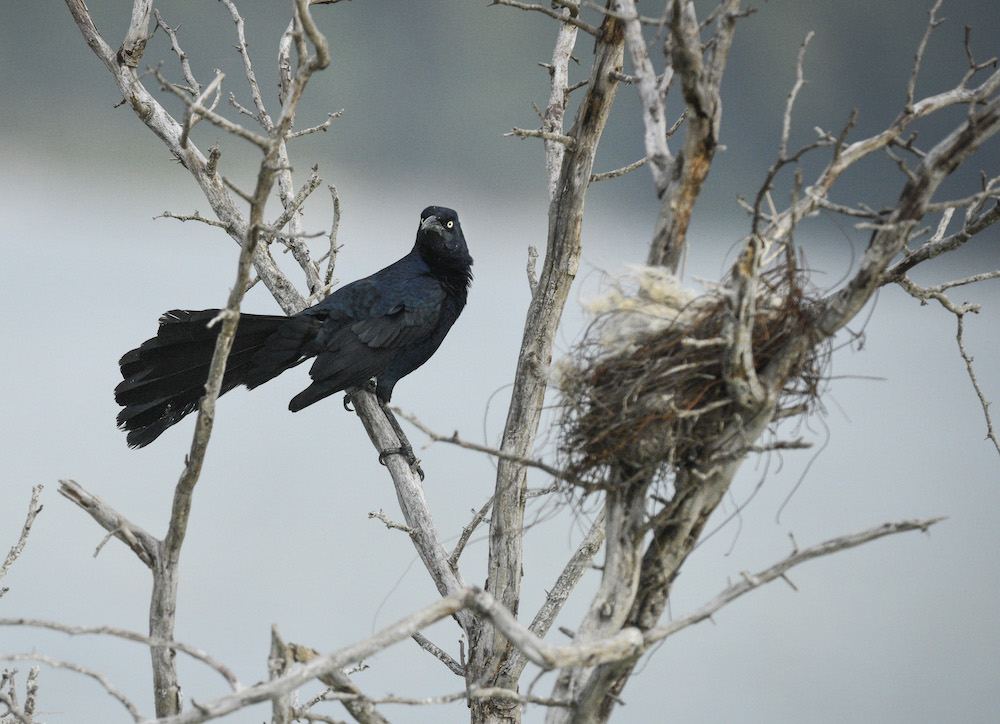
Quiscalus mexicanus. Great-tailed Grackle. Parque Yaxha, Petén. Nicholas Hellmuth, 2019. FLAAR Mesoamerica.
Noise can mask communication
Birds rely on vocalizations and other sounds to communicate with one another. Unfortunately, both natural and human-made noise can impact their ability to hear and respond to these important signals. As a result, birds – who depend on sounds for tasks like protecting their territory, keeping in touch with their mates and offspring, and alerting others to food or danger – may struggle to function in urban or noisy environments. This can lead to a reduction in bird diversity, as only those species that can adapt to the noise and disturbance are able to thrive in these areas.
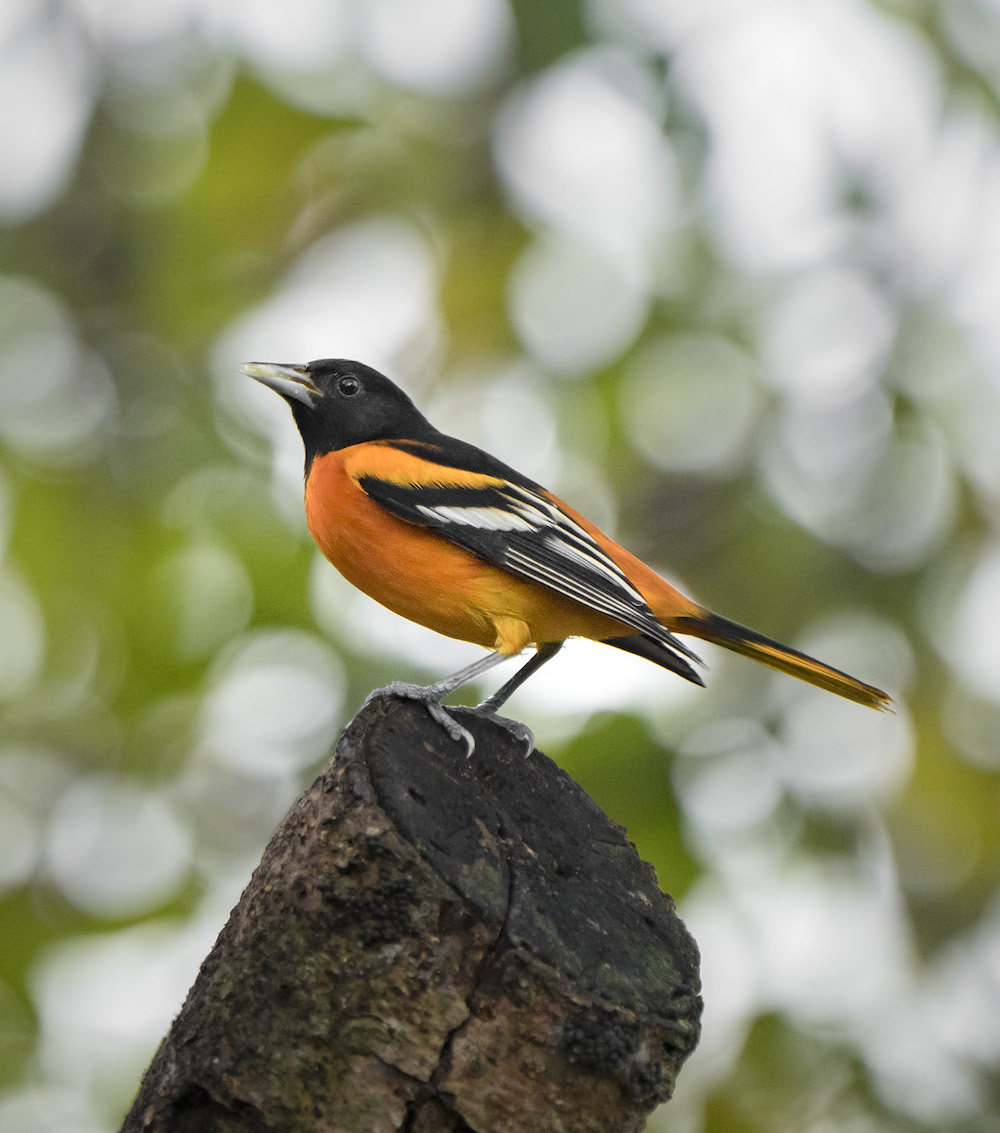
Icterus galbula. Baltimore oriole. El Remate, Petén. David Arrivillaga, 2023. FLAAR Mesoamerica.
Changes in reproductive success
As previously noted, prolonged stress triggers a range of physical reactions, such as heightened heart rate, hormonal imbalances, and weight loss. It also hinders birds’ immune systems, leading to reduced reproductive success. Likewise, noise pollution can impact egg laying, breeding, predators, brood parasites, and abandonment, as well as mating and parental communication. As a result, some species have experienced a decline in population numbers.

Columbina passerina chick and egg. Common ground dove. Parque Nacional Laguna del Tigre, Petén. Nicholas Hellmuth, 2022. FLAAR Mesoamerica.
Breeding habits
Birds that live in wooded environments tend to be more sensitive to noise than birds that live in open environments. Recent studies found that noise pollution delays the nesting of birds whose songs have a lower frequency and are therefore more difficult to hear through low-frequency human noise. Therefore, overall nest success is negatively correlated with noise among birds in indoor environments.

Celeus castaneus. Chestnut-colored woodpecker. Tikal, Petén. Edwin Solares, 2023. FLAAR Mesoamerica.
Effects on population density
Further research has substantiated that amplified noise levels lead to a decline in the population density of avian species. As previously noted, excessive noise can impede birds’ ability to communicate with one another. Typically, birds reside on isolated patches of greenery that are not linked together. The absence of acoustic connections between these patches can adversely affect the learning process. Consequently, members of the same species inhabiting different regions that struggle to communicate may become fragmented and isolated into small populations.

Amazona Farinosa. Mealy amazon. Boris Llamas, 2021. FLAAR Mesoamerica.
Changes in habitat selection
Noise pollution decreases the quality of habitats because fewer birds choose to stay in noisy habitats and those habitats become less favorable for the bird community. Habitat degradation results in fewer birds in the area, which could have consequences for the entire ecosystem.
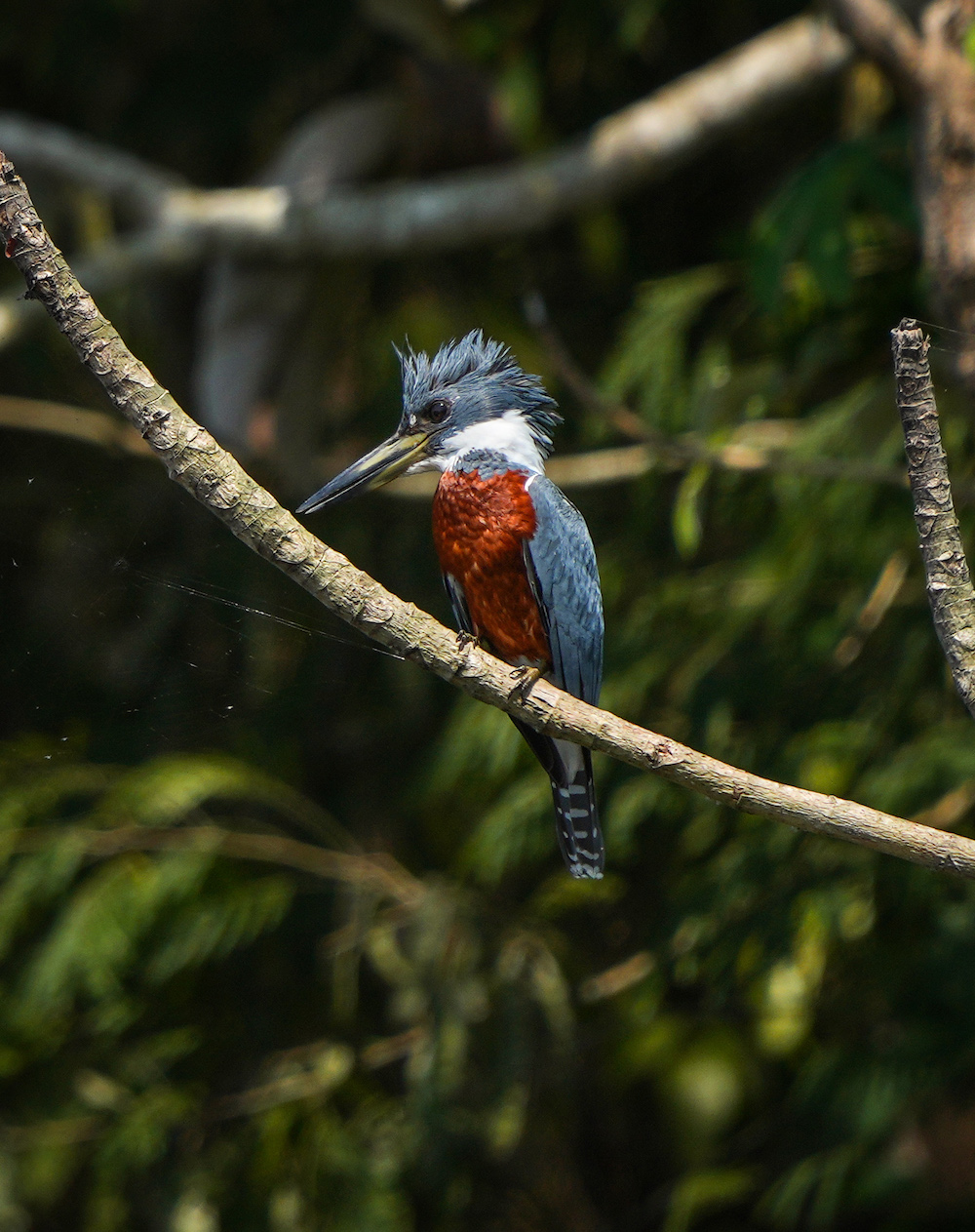
Megaceryle torquata. Ringed Kingfisher. Parque Nacional Yaxhá. Edwin Solares, 2023. FLAAR Mesoamerica.
Why should we worry about noise pollution affecting birds?
The impact of noise pollution extends beyond its effects on birds; it also has significant consequences for humans. Birds play a critical role in ecological functions that are essential to our well-being. They consume insects that we consider pests, including ants, flies, spiders, crickets, wasps, and others. Additionally, birds serve as crucial pollinators and dispersers of various species of flora, some which are vital crops. Furthermore, this taxon is often used as an indicator of ecosystems and habitats in many studies. As such, the negative effects of noise pollution on birds’ stress levels and reproduction can also have far-reaching implications for human health and the environment in general.

Amazilia candida. White-bellied emerald. Parque Nacional Yaxha, Petén. María Alejandra Gutiérrez, 2019. FLAAR Mesoamerica.
Cited References
- 2011
- Noise Pollution Filters Bird Communities Based on Vocal Frequency. PLoS ONE. .Available online:
https://doi.org/10.1371/journal.pone.0027052
- 2017
- A review on the impact of anthropogenic noise on birds. Borneo Science, Vol. 38, No. 1.
- 2013
- The impact of anthropogenic noise on avian communication and fitness. In Diego Gil and Henrik Brumm (editors) Avian Urban Ecology. Oxford University Press.
- 2017
- Anthropogenic noise reduces bird species richness and diversity in urban parks. Liverpool John Moores University, Vol. 159, No. 3, Pages 638 – 646.
- 2020
- Sensory pollutants alter bird phenology and fitness across a continent. Nature, Vol. 587, Pages 605 – 609.
Written by Flor Morales Arroyo.

